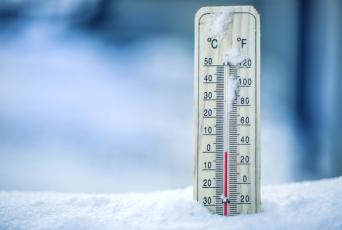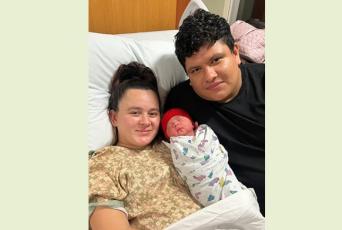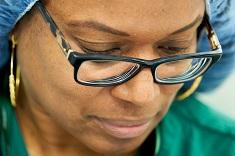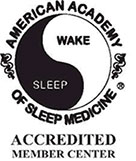
UHS Sleep & Neurodiagnostic Center
Schedule an Appointment
Do you suffer from daytime sleepiness? Loud snoring? Poor concentration or memory loss? Irritability or moodiness? Impotence? If you answer yes, you may have a sleep disorder.
The very latest in diagnosis and treatment for sleep-related medical conditions is available here in our community - at the UHS Sleep & Neurodiagnostic Center. The Center diagnoses and treats patients who suffer from sleeping and daytime alertness problems. It offers the finest in medical expertise and equipment to determine the cause and find the best treatment for many sleep-related disorders.
UHS Sleep & Neurodiagnostic Center is equipped with four private, home-like bedrooms with double beds, cable television, and private bathrooms with showers. The rooms are light and sound-proof and have individual room temperature controls for patient comfort. Testing is scheduled five nights a week (Sunday-Thursday), and split-night and nap studies are conducted during daytime hours.
Sleep Needs and Patterns
Most healthy adults need seven to eight hours of sleep per day. When your sleep is adequate, you should feel alert throughout the day. Sleep patterns change during your lifetime. Infants may sleep up to 16 hours a day, while the elderly may sleep much less and have a greater need for daytime naps. Some people fall asleep at times when they should be able to stay awake. Dreams, which are very important, can become nightmares and cause sleep problems for some people.
Getting Help
Most of these disorders can be successfully treated once they have been diagnosed . Some conditions may require a change in lifestyle, daily habits or work schedules; other conditions may require medication. Correct treatment, however, can only be prescribed after the medical condition has been diagnosed. And that is the mission of the UHS Sleep & Neurodiagnostic Center.
What To Expect at the Sleep Disorders Center
On your first visit, you will be examined by the Center's Medical Director and asked to complete a questionnaire regarding your particular sleep problem. Once this information is obtained, a diagnosis may be possible, or you may be asked to return for further evaluation of your problem while you sleep. Monitoring your sleep often shows when problems are occurring and will help the Center's team of sleep specialists to understand why.
The recording of your sleep will include brain activity, eye movements, chin movements, heart activity, breathing effort and blood oxygen levels.
Diagnosis and Treatment
After your stay at the Center, your sleep record will be reviewed and analyzed. You'll then have a follow-up meeting and consultation to discuss your diagnosis and treatment options.
Sleep Disorders
Obstructive Sleep Apnea
What is Sleep Apnea?
Obstructive Sleep Apnea is very common and affects millions of Americans. It is caused by a blockage of the airway, usually when the soft tissue in the rear of the throat collapses and closes during sleep. Sleep is fragmented and of poor quality. Loud snoring, snorting and periods of silence are typical symptoms of sleep apnea but are not always present, especially in children.
Sleep Apnea is a serious, potentially life threatening condition that is far more common than generally understood. There are two types of sleep apnea: central and obstructive. Central sleep apnea, which is less common, occurs when the brain fails to send the appropriate signals to the breathing muscles to initiate respirations. Obstructive sleep apnea is far more common and occurs when air cannot flow into or out of the person’s nose or mouth, although efforts to breathe continue.
In a given night, the number of involuntary breathing pauses or “apneic events” may be as high as 20 to 30 or more per hour. These breathing pauses are almost always accompanied by snoring between apnea episodes, although not everyone who snores has this condition. Sleep apnea can also be characterized by choking sensations. The frequent interruptions of deep, restorative sleep often lead to the early morning headaches and excessive daytime sleepiness.
Early recognition and treatment of sleep apnea is important because it may be associated with irregular heartbeat, high blood pressure, heart attack and stroke.
Who Gets Sleep Apnea?
Sleep apnea occurs in all age groups and both sexes but is more common in men and possibly young African Americans. It has been estimated that as many as 18 million Americans have sleep apnea. Four percent of middle-aged men and two percent of middle-aged women have sleep apnea along with excessive daytime sleepiness. People most likely to have or develop sleep apnea include those who snore loudly and also are overweight, or have high blood pressure, or have some physical abnormality in the nose, throat, or other parts of the upper airway. Sleep apnea seems to run in families, suggesting a possible genetic basis.
What Causes Sleep Apnea?
Certain mechanical and structural problems in the airway cause the interruptions in breathing during sleep. In some people, apnea occurs when the throat muscles and tongue relax during sleep and partially block the opening of the airway. When the muscles of the soft palate at the base of the tongue and the uvula (the small fleshy tissue hanging from the center of the back of the throat) relax and sag, the airway becomes blocked, making breathing labored and noisy and even stopping altogether. Sleep apnea also can occur in overweight people when an excess amount of tissue in the airway causes it to be narrowed. Ingestion of alcohol and sleeping pills increases the frequency and duration of breathing pauses in people with sleep apnea.
During the apneic event, the person is unable to breathe in oxygen and to exhale carbon dioxide, resulting in low levels of oxygen and increased levels of carbon dioxide in the blood. The reduction in oxygen and increase in carbon dioxide alert the brain to resume breathing and cause arousal. With each arousal, a signal is sent from the brain to the upper airway muscles to open the airway; breathing is resumed, often with a loud snort or gasp. Frequent arousals, although necessary for breathing to restart, prevent the patient from getting enough restorative, deep sleep.
What Are The Effects Of Sleep Apnea?
Because of the serious disturbances in their normal sleep patterns, people with sleep apnea often feel very sleepy during the day and their concentration and daytime performance suffer. The consequences of sleep apnea range from annoying to life threatening. They include depression, irritability, sexual dysfunction, learning and memory difficulties, and falling asleep while at work, on the phone or driving. It has been estimated that up to 50 percent of sleep apnea patients have high blood pressure. Although it is not known with certainty if there is a cause and effect relationship, it appears that sleep apnea contributes to high blood pressure. Risk for heart attack and stroke may also increase in those with sleep apnea.
When Should Sleep Apnea Be Suspected?
For many sleep apnea patients, their spouses are the first ones to suspect that something is wrong, usually from their heavy snoring and apparent struggle to breathe. Co-workers or friends of the sleep apnea victim may notice that the individual falls asleep during the day at inappropriate times (such as while driving a car, working or talking). It is important that the person see a doctor for evaluation of the sleep problem.
How Is Sleep Apnea Diagnosed?
In addition to the primary care physician, pulmonologists, neurologists, or other physicians with specialty training in sleep disorders may be involved in making a definitive diagnosis and initiating treatment. Diagnosis of sleep apnea is not simple because there can be many different reasons for disturbed sleep. Several tests are available for evaluating a person for sleep apnea.
Polysomnography is a test that records a variety of body functions during sleep, such as the electrical activity of the brain, eye movement, muscle activity, heart rate, respiratory effort, air flow, and blood oxygen levels. These tests are used both to diagnose sleep apnea and to determine its severity. Diagnostic tests usually are performed in a sleep center, but new technology may allow some sleep studies to be conducted in the patient’s home.
How Is Sleep Apnea Treated?
The specific therapy for sleep apnea is tailored to the individual patient based on medical history, physical examination, and the results of polysomnography. Medications are generally not effective in the treatment of sleep apnea.
Behavioral Therapy
Behavioral changes are an important part of the treatment program, and in mild cases behavioral therapy may be all that is needed. The individual should avoid the use of alcohol, tobacco and sleeping pills, which make the airway more likely to collapse during sleep and prolong the apneic periods. Overweight persons can benefit from losing weight. Even a 10 percent weight loss can reduce the number of apneic events for most patients. In some patients with mild sleep apnea, breathing pauses occur only when they sleep on their backs. In such cases, using pillows and other devices that help them sleep in a side position is often helpful.
Physical Or Mechanical Therapy
Nasal continuous positive airway pressure (CPAP) is the most effective treatment for sleep apnea. In this therapy, the patient wears a mask over the nose during sleep, and pressure from an air blower forces air through the nasal passages. The air pressure is adjusted so that it is just enough to prevent the throat from collapsing during sleep. The pressure is constant and continuous. Nasal CPAP prevents airway closure while in use, but apnea episodes return when CPAP is stopped or used improperly.
Variations of the CPAP device attempt to minimize side effects that sometimes occur, such as nasal irritation and drying, facial skin irritation, abdominal bloating, mask leaks, sore eyes and headaches. Some versions of CPAP vary the pressure to coincide with the persons breathing pattern, and others start with low pressure, slowly increasing it to allow the person to fall asleep before the full prescribed pressure is applied.
Dental appliances that reposition the lower jaw and the tongue have been helpful to some patients with mild sleep apnea or who snore but do not have sleep apnea. A dentist or orthodontist is often the one to fit the patient with such a device.
What are the risks of Sleep Apnea if left untreated?
In addition to a feeling of tiredness during the day, untreated Sleep Apnea can cause high blood pressure, and potentially increase the risk of heart attack or stroke. Other consequences include falling asleep at inappropriate times, memory problems, acid reflux and frequent nighttime urination.
* Adapted from the American Academy of Sleep Medicine
Insomnia
What is it?
There are four basic kinds of insomnia:
- Difficulty falling asleep
- Difficulty staying asleep
- Waking up too early
- Poor quality sleep
Someone with insomnia may have the following symptoms:
- Feeling tired and grumpy during the day
- Having trouble concentrating at work
- Falling asleep during the day
Everyone has an occasional night of bad sleep. For most people insomnia lasts only a few days and goes away without treatment. But stress or depression can cause a higher level of insomnia that may last for several weeks. This kind of insomnia may not go away on its own.
Who gets it?
It is a common sleep disorder. About 30% of adults have symptoms of insomnia. About 10% of adults are likely to have chronic insomnia. It is more common among elderly people and women. Some medical conditions cause insomnia, or it may be a side effect of a medication.
How do I know if I have it?
- Do you have trouble falling asleep or staying asleep, or do you wake up too early or feel unrefreshed after sleeping?
- Does this problem occur even though you have the opportunity and the time to get a good night’s sleep?
- Do you have at least one of the following problems along with poor sleep?
- Low energy
- Lack of motivation
- Attention, concentration or memory problems
- Poor performance at school or work
- Extreme mood changes
- Daytime sleepiness
- Trouble making errors at work or while driving
- Tension, headaches or stomach aches
- Frustration or worry about your sleep
If your answer to these questions is yes, then you might have insomnia.
It is also important to know if there is something else that is causing your sleep problems. They may be a result of one of the following:
- Another sleep disorder
- A medical condition
- Medication use
- A mental health disorder
- Substance abuse
Do I need to see a sleep specialist?
First, you should try to follow good sleep hygiene. You also may want to discuss your sleep problems with your primary care doctor. If the insomnia causes you distress or daytime sleepiness, then you may want to visit a sleep specialist. He or she can find the cause and treat your insomnia.
What will the doctor need to know?
First, the doctor will need to know when your insomnia started. He or she will also want to know what else has been happening in your life. Finally, your medical history is very important. Be sure to tell the doctor if you are taking any medications. (This includes medicine that you may buy from the drugstore without a prescription.)
Keep a sleep diary for two weeks. Record when you go to sleep and when you wake up, along with how long you were awake during the night. The sleep diary will help the doctor see your sleeping patterns. The sleep diary information gives the doctor clues about what is causing your problem and how to correct it.
Will I need to take any tests?
Doctors do not need any tests to treat most insomnia patients. A sleep specialist may give you a written test to analyze your mental and emotional well-being. The specialist may need to test your blood in the lab if he or she suspects that you have a related medical problem.
You would need an overnight sleep study only if the doctor suspects that you may have sleep apnea or another sleep disorder.
How is it treated?
Many cases of insomnia will respond to changes that you can make on your own. You can often sleep better by simply following the practices of good sleep hygiene.
Sleep hygiene consists of basic habits and tips that help you develop a pattern of healthy sleep. There are also easy ways to make your bed and your bedroom more comfortable. See the Resources section of this site to find out how you can start down the path to better sleep.
When self-treatment does not work, a doctor can provide help. He or she can teach you different ways to improve your sleep and help you find ways to take your mind off of sleep. Staying out of bed until you are very, very sleepy is helpful too. These methods are a part of what is known as behavioral therapy.
Your doctor also may want to change any medications that you currently take. These drugs may be related to your sleep problems.
You need to seek help from a therapist if stress or depression is the cause of your sleep problems. The doctor may decide that the symptoms need to be treated with medication.
Many types of medication can help improve your sleep. Some are specifically approved to treat insomnia. These sleeping pills are called hypnotics. Some medications that treat other problems also can help you sleep. Your doctor can decide which one will work best for you. You should only take a medication when supervised by a doctor.
New insomnia medications have become available over the past few years. Others are in the process of being developed. Research continues to study how well these treatments work. This research also will help us learn more about the causes of insomnia.
* from the American Academy of Sleep Medicine
Delayed Sleep Phase Syndrome
What is it?
Delayed sleep phase disorder (DSP) is a circadian rhythm disorder. It consists of a typical sleep pattern that is "delayed" by two or more hours. This delay occurs when one’s internal sleep clock (circadian rhythm) is shifted later at night and later in the morning. To say it simply: a person's body wants to go to sleep too late, and wake up too late. Once sleep occurs, the sleep is generally normal. But the delay leads to a pattern of sleep that is later than what is desired or what is considered socially acceptable. This pattern can be a problem when it interferes with work or social demands.
When left to his or her own schedule, a person with DSP is likely to have a normal amount and quality of sleep. It simply occurs at a delayed time. One sign of this disorder is difficulty falling asleep until late at night. Another sign is having a hard time getting out of bed in the morning for work or school. These signs can make DSP look like insomnia. Daytime functioning can be severely impaired by DSP. It can lead to excessive sleepiness and fatigue. When able to sleep on their own schedules, people with DSP often stay up until they get tired and then sleep until they awaken late in the morning. In this case, they tend to have no complaint of difficulty falling to sleep or feeling poorly during the day.
Who gets it?
The exact rate of DSP is unknown in the general population. It is much more common in teens and young adults. From 7% to 16% of them may have it. DSP is likely to be found in 10% of people with a complaint of chronic insomnia. People who tend to be "evening types" or "night owls" are likely to develop DSP.
There is likely to be some genetic component. Some environmental factors may also be involved. A lack of exposure to morning sunlight may make it worse. Too much exposure to bright evening sunlight may also increase symptoms of DSP. A family history of DSP is common in about 40% of people with the disorder.
How do I know if I have it?
- Is there a delay in your sleep pattern in relation to your desired sleep and wake times? Do you have trouble falling asleep at the desired time of night? Are you then unable to awaken at the desired or socially acceptable time?
- When left to your own sleep schedule, do you have a normal duration and quality of sleep? Does this sleep occur in a stable, but delayed time period in relation to what is desired or socially acceptable?
- Have you had this kind of stable but delayed sleep time for at least seven days?
If you answered “yes” to these questions, then you may have delayed sleep phase disorder.
It is also important to know if there is something else that is causing your sleep problems. They may be a result of one of the following:
- Another sleep disorder
- A medical condition
- Medication use
- A mental health disorder
- Substance abuse
Do I need to see a sleep specialist?
Yes. It is easy to confuse DSP with normal variations of sleep and other types of insomnia. Consulting with a sleep specialist is your best bet to help clarify current sleep problems. He or she will also be able to help you develop a plan to correct these problems. A specialist can assess the factors that cause and make this problem worse. These include both social and behavioral factors.
What will the doctor need to know?
The sleep doctor will do a thorough physical exam. He or she will also discuss with you the history of these sleep problems. It would be helpful to keep a sleep diary prior to seeing a sleep doctor. Bring this information with you to the appointment. A sleep diary is a systematic way to track your sleep pattern. You record the time you get into bed, the time required to fall asleep, and the time you wake up in the morning. Sleep diaries often show a regular pattern of difficulty falling to sleep. They often show few or no awakenings once asleep. They also tend to show a sleep duration that is reduced during the work week and lengthy on the weekend.
Will I need to take any tests?
An overnight sleep study is not normally needed for someone who suffers from DSP. Your doctor may have you do an overnight sleep study if your problem is severely disturbing your sleep. This study is called a polysomnogram. It charts your brain waves, heart rate, and breathing as you sleep. It also records how your arms and legs move. This study will help determine if there are any objective sleep disorders related to your sleep problem.
How is it treated?
The most accepted treatment for DSP is what is called chronotherapy. This is a method of behavioral treatment. Your bedtime is delayed by about three hours per day for five or six consecutive days. Once the desired bedtime is reached the schedule is frozen. This schedule needs to be maintained rigidly at this point.
Bright light therapy is another proven technique for changing one’s internal circadian rhythms. But its specific use for DSP has not been well validated. In theory, exposure to bright light should occur shortly after waking up at the desired time in the morning. Then bright outdoor light in the evening hours should be avoided. Melatonin, taken around dusk or several hours before the desired bedtime, can also be helpful. Melatonin is a substance created by the brain to help establish the sleep-wake cycle at the right time. Melatonin is not an FDA-regulated medication however.
* Adapted from the American Academy of Sleep Medicine, by Donald R. Townsend, PhD
Restless Legs Syndrome
Do you have restless legs syndrome?
- When sitting or lying down, do you have unpleasant or creepy-crawly sensations in your legs (and sometimes in other parts of your body), tied to a strong feeling or urge to move?
- Do the sensations and urge to move come on during periods of rest or inactivity and are they relieved by movement?
- Do the sensations and urge to move bother you more in the evening and at night rather than during the day?
- Do you often have trouble falling asleep or staying asleep?
- Does your bed partner tell you that you jerk your legs (or your arms) when you are asleep; do you sometimes, have involuntary leg jerks when you are awake?
- Are you frequently tired or fatigued during the day?
- Do you have family members who experience these same sensations and urge to move?
- Have medical tests not revealed a cause for your sensations and urge to move?
If you do have restless legs syndrome (RLS), you are not alone. Up to 8% of the U.S. population may have the neurologic condition. Many have a mild form of the disorder, but RLS severely affects the lives of millions of individuals.
Primary Feature of RLS
Adults with RLS will typically have all four of these primary features.
- The bothersome, but usually not painful, sensations deep in the legs produce an irresistible urge to move. Some words used to describe these sensations include creeping, itching, pulling, creepy-crawly or tugging.(These sensations may involve a strong urge to move the legs. These may also occasionally occur in the arms.)
- Symptoms are worse or exclusively present when the afflicted individual is at rest, and the sensations are typically lessened by voluntary movement of the affected extremity.
- Symptoms are worse in the evenings and at night, especially when the individual lies down.
- Movement of the toes, feet, or legs (known as restlessness) are typically seen when the affected individual is sitting or lying down in the evening. The restlessness may be seen as fidgetiness or nervousness.
Associated features
RLS symptoms can cause difficulty in falling and staying asleep. Approximately 80% of people with RLS will also have periodic limb movements of sleep, which are jerks that typically occur every 20 to 30 seconds on and off during the night, often causing partial arousals that disrupt sleep.
Because you may experience difficulties with falling asleep and staying asleep at night, you may be abnormally tired or even sleepy during wake hours. Chronic sleep deprivation and its resultant daytime sleepiness can affect your ability to work, participate in social activities, and partake in recreational pastimes, such as going to a theater.
Cause
Research into the cause of RLS is ongoing and answers are limited, but we do think that RLS may have different but perhaps overlapping causes.
RLS often runs in families. Researchers are currently looking for the gene or genes that may be responsible for this form of RLS, known as primarily or familial RLS.
RLS may be the result of another condition, which, when present, worsens the underlying RLS. This is called secondary RSL. During pregnancy, particularly during the last few months, up to 25% of women develop RLS. After delivery, their symptoms often vanish. Anemia and low levels of iron in the blood are associated with symptoms of RLS, as are chronic conditions such as peripheral neuropathy (damage to the nerves in the hands and feet) and kidney failure.
If you have no family history of RLS and no underlying or associated conditions causing the disorder, your RLS is said to be idiopathic, meaning without a known cause.
Age of onset
Though RLS is diagnosed most often in people in their middle years, many individuals with RLS, particularly those with primary RLS, can trace their symptoms back to childhood. These symptoms may have been called growing pains or the children may have been thought to be hyperactive because they had difficulty sitting quietly.
Diagnosis
With its classic symptoms, RLS is diagnosed by reviewing your medical history. After ruling out other medical conditions as the cause of your symptoms, your healthcare provider can make the diagnosis of RLS by listening to your description of these sensations. No laboratory test exists that can confirm your diagnosis of RLS. However, a thorough physical examination, including the results of necessary laboratory tests, can reveal temporary disorders, such as iron deficiency, that may be associated with RLS. Some people (including those with periodic limb movements of sleep and without the abnormal sensations of RLS) will require an overnight testing of sleep to determine other causes of their sleep disturbance.
Treatment
The goal of any medical treatment, including the treatment of RLS, is to achieve the greatest benefit while incurring the fewest risks. Sound treatment strategy, therefore involves weighing these risks and benefits and beginning with the least-risky treatments. Low-risk therapies involve treating symptoms that are caused by underlying disorders and making lifestyle changes.
If an underlying iron or vitamin deficiency is found to be the cause of your restless legs, supplementing your iron may be sufficient to relieve your symptoms. Current recommendations include checking a serum level (to evaluate iron-storage status) and supplementing with iron if your ferritin level is less than 50 mcg/L.
The use of some medications seems to worsen the symptoms of RLS. These drugs include calcium-channel blockers (used to treat high blood pressure and heart conditions), most antinausea medications, some cold and allergy medications, major tranquilizers, phenytoin, and most medications used to treat depression.
Lifestyle changes involve determining, on an individual basis, which habits and activities worsen or improve your symptoms of RLS. A healthy balanced diet is important in reducing the severity of your RLS. The best solution is to avoid all caffeine-containing products, including chocolate and caffeinated beverages such as coffee, tea, and soft drinks. The consumption of alcohol increases the span or intensity of symptoms for most individuals; again, refraining from the use of alcohol is your best solution.
Because fatigue and drowsiness tend to worsen the symptoms of RLS, implementing a program of good sleep hygiene should be a first step toward resolving your symptoms. You may find that you achieve your best sleep later in the 24-hour cycle – for example, sleeping from 2am until 10am may work best for you. Some people find that performing isometric exercises for a few minutes before bed is helpful.
Self-directed activities that counteract your symptoms of RLS appear to be effective, although temporary, solutions to managing the disorder. You may find that walking, stretching, taking a hot or cold bath, massaging your affected limb, applying hot or cold packs, using vibration, performing acupressure, and practicing relaxation techniques (such as biofeedback, meditation, or yoga) may help reduce or relieve your symptoms. You may also find that keeping your mind actively engaged through activities such as participating in a stimulating discussion or argument, performing intricate needlework, or playing video games helps during times that you must stay seated, such as when you are traveling.
Unfortunately, in most cases, the symptoms of RLS either initially do not resolve with treatment of underlying disorders and the implementation of lifestyle changes or, over time, progress so that relief is insufficient with these methods. In either case, the use of medications (pharmacologic therapy) may become necessary.
Pharmacologic therapy
These medications fall into four main classes- dopaminergic agents, sedatives, pain relievers, and anticonvulsants. Each drug or class of drugs has its own benefits, limitations, and side-effect profile. Dopaminergic agonists are the only FDA-approved medications for RLS. The choice of medication is dependent upon the timing and severity of your symptoms.
Dopaminergic agents
The primary and first-line treatment for RLS is with dopaminergic agents: primarily dopamine-receptor agonists like Mirapex (pramipexole), and Requip (ropinirole), but also drugs like Sinemet (Carbidopa/ Levodopa) that add dopamine to the system. Although dopaminergic agents are used to treat Parkinson’s disease, RLS is not a form of Parkinson’s disease, and RLS is not a precursor to Parkinson's Disease. All of these drugs should be started at low doses and increased very slowly to decrease potential side effects.
Sedatives
Sedative agents are most effective for relieving the nighttime symptoms of RLS. They are used either at bedtime in addition to a dopaminergic agent or for individuals who have primarily nighttime symptoms. The most commonly used sedative is clonazepam (Klonopin).
Pain relievers
Pain-relieving drugs are most often for people with severe relentless symptoms of RLS. Some examples of medications in this category include codeine, Darvon or Darvocet (propoxyphene), Dolophine (methadone), Percocet (Oxycodone), Ultram (Tramadol), and Vocodin (Hydrocodone).
Anticonvulsants
These drugs are particularly effective for some, but not all, patients with marked daytime symptoms, particularly people who have pain syndromes associated with their RLS. Gabapentin (Neurontin) is the anticonvulsant that has been shown the most promise in treating the symptoms of RLS.
Summary
Because no single treatment for RLS is entirely effective for everyone, continued research of it is of vital importance. Until we find the cause of RLS and a cure, working closely with your healthcare provider, interacting with a local support group, and exploring nondrug treatments as well as pharmacologic therapy will help you find the answer to a happy productive life in spite of having RLS.
*Adapted from the Restless Legs Syndrome Foundation
Narcolepsy
What is it?
The term narcolepsy is used to describe a group of people affected by excessive sleepiness. It also includes features of dreaming that occur while awake. Narcoleptics are often refreshed by short naps. However, after two or three hours, they feel sleepy again. At times, people with narcolepsy can fall asleep suddenly. These “sleep attacks” can happen while eating, walking or driving.
* Adapted from the American Academy of Sleep Medicine
There are two main kinds of narcolepsy:
- Narcolepsy with cataplexy
- Narcolepsy without cataplexy
Cataplexy is when the leg, arm or face muscles suddenly become weak. It is normally caused by strong emotions. This is what people often experience while laughing or when they are surprised.
People with narcolepsy often experience the following:
- Sleep paralysis
You are unable to move for a few seconds or minutes as you are falling asleep or waking up.
- Hypnagogic hallucinations
You see things that aren’t there. You have the feeling that there is someone in the room with you as you are falling asleep.
- Disturbed night time sleep
You wake up frequently and have trouble falling back to sleep.
Who gets it?
About one out of every 2,000 people is known to have narcolepsy. There does seem to be a genetic link to it. There are more people in Japan who have it. Fewer people in Israel suffer from it. The chance that you have narcolepsy is higher when a relative also has it. It affects the same number of men and women.
How do I know if I have it?
- Is it almost impossible for you to keep from falling asleep during the day?
- Do you have problems with feeling paralyzed upon falling asleep or waking up?
- Do you have problems with hallucinations or feeling someone is in the room with you upon falling asleep or waking up?
- Do you ever "do things" in your sleep, such as continue knitting while falling asleep, have a non-sensical conversation with someone, write a sentence that makes no sense, get off on the wrong exit?
- Do you ever feel a sense of body weakness, such as your head feeilng heavy or knees buckling with laughter?
If your answer to some of these questions is yes, then you might have narcolepsy. Narcolepsy can last for your entire life. It usually starts between the ages of 12 and 20. The symptoms do not get better without treatment.
It is also important to know if there is something else that is causing your sleep problems. They may be a result of one of the following:
- Another sleep disorder
- A medical condition
- Medication use
- A mental health disorder
- Substance abuse
Do I need to see a sleep specialist?
Yes. Many primary care doctors are not always sure how to figure out if you have narcolepsy. Since it is not a common sleep problem, doctors do not see many patients who have it. Sleep specialists deal with people who have narcolepsy all the time. They have the experience and skill to help you get better. They will need to know your full medical history. They will also be sure to give you a physical exam. Finally, you will need to do two sleep studies. These sleep studies will help them evaluate your problem.
What will the doctor need to know?
The doctor will need to know what symptoms you have and when they started. If you have sleep attacks, he or she will want to know how often you have them and what time of day they occur. It will be important to tell your doctor how old you were when you first started to have problems. He or she will need to know your full medical history. Find out if you have any family members with sleep problems. It will also be helpful if you fill out a sleep diary for two weeks.
Will I need to take any tests?
To know for sure if you have narcolepsy, you will need to do two sleep studies:
- Overnight Sleep Study
- Also called a polysomnogram, this study records a full night of sleep.
- Multiple Sleep Latency Test (MSLT)
- This is a daytime test that records at least four naps.
The polysomnogram will chart your brain waves, heart beat, and breathing as you sleep. It will also record how your arms and legs move. This will show if there are other problems that are causing your sleep attacks. Two examples of these problems are sleep apnea and periodic limb movement disorder.
People who have narcolepsy tend to fall asleep at unusual times during the day. The MSLT will measure how fast you fall asleep during the day. It will also show what kind of sleep (i.e. REM sleep) you have when you take a nap.
Your doctor may ask that you take a test to screen for drugs before you have the MSLT. There are a number of drugs that can affect the results of the sleep study. The drug screen will help the doctor to know what the MSLT really says about your sleep problem.
How is it treated?
The most common way to treat narcolepsy is to use a medication. Your doctor will most likely want you to take a stimulant that helps you stay awake during the day. There are a variety of stimulants that can be used. Some common stimulant type medications are modafinil (provigil), methylphenidate (ritalin), amphetamine salts (adderall). A newer medication taken at night called gaba-hydroxybutyrate (xyrem) may also be tried. It may take some time for your doctor to find the right medication for you. He or she will also need to find the right dosage to control your symptoms.
If you have narcolepsy with cataplexy,a doctor may also need to use medications (usually SSRIs) to treat your muscle weakness with emotions. Xyrem may also be helpful in this case.
A common non-pharmacologic treatment includes maintaining good sleep hygiene, and napping when needed.
Upper Airway Resistance Syndrome
Upper Airway Resistance Syndrome or UARS is a sleep condition characterized by airway resistance to breathing during sleep. The primary symptoms include daytime sleepiness and excessive fatigue.
Diagnosis
It is difficult to confirm diagnosis, as few sleep testing centers have the proper test equipment to recognize the illness.
Polysomnography (sleep study) with the use of a probe to measure Pes (esophageal pressure) is the gold standard diagnostic test for UARS. Apneas and hypopneas are absent or present in low numbers. Multiple snore arousals may be seen, and if an esophageal probe (Pes) is used, progressive elevation of esophageal pressure fluctuations terminating in arousals is noted. UARS can also be diagnosed using a nasal cannula/pressure transducer to measure the inspiratory airflow vs time signal.
Explanation
During sleep the muscles of the airway become relaxed. The relaxation of these muscles in turn reduces the diameter of the airway. Typically, the airway of a UARS patient is already restricted or reduced in size, and this natural relaxation reduces the airway further. Therefore, breathing becomes labored. It can be likened to breathing through a coffee straw.
Pathophysiology
Pathophysiology of UARS is similar to obstructive sleep apnea / hypopnea syndrome in that abnormal airway resistance in the upper airway during sleep leads to unwanted physiologic consequences. Increased upper airway resistance in this disorder does not lead to cessation of airflow (apnea) or decrease in airflow (hypopnea), but instead leads to an arousal secondary to increased work of breathing to overcome the resistance. Repeated and multiple arousals (which the patient is usually unaware of) result in an abnormal sleep architecture and daytime somnolence (sleepiness).
Clinical presentation
Patients present with snoring and excessive daytime somnolence, and look very much like patients with obstructive sleep apnea.
Treatment
Treatment for UARS is essentially the same as that for obstructive sleep apnea. (See Sleep apnea)
Behavioral modification
This includes getting at least 7-8 hours of sleep, avoiding sleeping in supine position (on the back), sleeping with head end of bed elevated and avoiding sedatives, alcohol and narcotics.
Positive airway pressure therapy
This again, is similar to that in obstructive sleep apnea and works by splinting the airway open from the pressure, thus reducing the airway resistance. Reimbursement for the positive airway pressure device (CPAP etc.) may be a concern in certain healthcare models.
Oral appliances
Oral appliances to protrude the tongue and mandible (jaw) forward are effective in reducing the airway resistance.
* Adapted from Wikipedia
Shift Work Sleep Disorder
What is it?
Shift work sleep disorder is a circadian rhythm sleep disorder that occurs due to a work schedule that takes place during the normal sleep period. This schedule requires you to work when your body wants to sleep. Then you have to try to sleep when your body expects to be awake. The timing of when you sleep and wake is much different than what your internal body clock expects.
This clock controls the “circadian rhythms” in your body. The word “circadian” means to occur in a cycle of about 24 hours. These rhythms make you feel sleepy or alert at regular times every day. Your internal clock tells your body when it is time to sleep at night. It also tells your body when it is time to be awake during the day. Among other factors, your clock is “set” by your exposure to sunlight.
There are several types of shift work schedules. These include the following:
- Night shifts
- Early-morning shifts
- Rotating shifts
This sleep problem causes you to have trouble sleeping or to be severely tired. It is most often reported due to the night and early-morning shifts. These workers typically sleep one to four hours less than average. They also feel that the quality of their sleep is very poor. They do not feel refreshed when they wake up. This can hinder their performance at work. It can also make them less alert. This can put them at risk of an injury on the job.
The condition usually lasts as long as you keep a shift work schedule. Once you begin sleeping at a normal time again, the problems tend to go away. In some people, the sleep problems may continue even after the shift work schedule has ended. There are also many different types of work schedules. Some people may only work an overnight shift to cover for a co-worker. Their sleep problem would be very brief. Others may work a regular night shift. Their problem would be ongoing. Many shift workers also work more hours each week than the average person. This can add fatigue to their sleep problems.
Many early-morning work shifts start between 4 a.m. and 7 a.m. These shifts may cause you to have trouble falling asleep or waking up. Those who work a regular evening shift may also have a hard time falling asleep.
Those who work night shifts are likely to become very tired on the job. They may feel a strong urge to take a nap. They also may not think clearly because of a reduced level of alertness. They are more likely to make mistakes.
They tend to sleep during normal nighttime hours on weekends or days off. This makes it even harder for their bodies to adjust to the unusual work hours.
This disorder can also affect you away from the job. You may need to use major portions of your free time to catch up on sleep. This can have a negative impact on your social and family life. You may also be more irritable. This can hurt your relationships with others. The disorder also increases the risk of drowsy driving. This can lead to an auto accident as you drive home from work. The disorder may also make stomach or heart disorders worse. Using drugs or alcohol to try to improve sleep can lead to substance abuse.
Who gets it?
Sleep problems from shift work affect male and female workers of all age groups. Those who have unusual work hours are most likely to have it. Estimates are that 2% to 5% of the general population is affected. This estimate does not include people who work early-morning shifts.
Some people feel that they function better at night. They go to bed very late at night on a regular basis. They may have delayed sleep phase disorder. These people may choose to work a night shift. They prefer to work during the late hours when they feel that they are more alert.
Do I need to see a sleep specialist?
You may have to keep unusual work hours for a long period of time. In this case, you may want to visit a sleep specialist. He or she can provide you with methods to help your body adjust and to improve your sleep.
What will the doctor need to know?
You should complete a sleep diary for two weeks. This will give the doctor clues as to what might be causing your problems. You can also rate your sleep with the Epworth Sleepiness Scale. This will help show how your sleep is affecting your daily life. The doctor will need to know your complete medical history. Be sure to inform him or her of any past or present drug and medication use.
Will I need to take any tests?
Normally, a record of your sleep patterns and your work schedule is enough information for the doctor. He or she may want to use additional tests if other sleep disorders are suspected to be causing your problems. One or both of the following sleep studies might be considered:
- Overnight Sleep Study
- Also called a polysomnogram, this study charts your brain waves, heart beat, and breathing as you sleep. It also records how your arms and legs move.
- Multiple Sleep Latency Test (MSLT)
- This is a daytime nap study that records brain waves during at least four naps. The MSLT measures how fast you fall asleep during the day. It also shows what kind of sleep you have when you take a nap.
Your doctor may ask that you take a test to screen for drugs before you have the MSLT. There are a number of drugs that can affect the results of the sleep study. The drug screen will help the doctor to know what the MSLT really says about your sleep problem.
How is it treated?
Many employers have plans to help their shift workers stay better rested. The goal is to lessen the effects of shift work on the workers’ body clocks. This keeps them healthier overall, as well as safer on the job. Some of the techniques used by employers include the following:
- Reducing the number of times a worker changes shifts
- Changing shifts forward in time instead of backward
- Giving the workers regular rest periods
- Offering employees the option of exercise breaks
- Using bright light to imitate sunlight in the work-force
- Utilizing sunglasses on the drive home to simulate sunset
- Using ear-plugs and eye-shades and "do not disturb" signs to help maintain good sleep quality during the day
- try to avoid "getting normal" on weekends
At times, medications to help you sleep during the day, and stay awake at night during your work period may also be utilized. It is best to see a sleep physician for this case.
* Adapted from the American Academy of Sleep Medicine
Pediatric Sleep Disorders
Obstructive Sleep Apnea
Obstructive sleep apnea syndrome (OSAS) is a common problem in children, and is increasing being recognized as a cause of daytime attentional and behavioral problems.
Restless Leg Syndrome
Restless Legs Syndrome (RLS) is a common and treatable condition. RLS affects 5% to 10% of adults in some countries. In the United States alone, RLS is believed to afflict more than 10 million adults and an estimated 1.5 million children and adolescents.
Insomnia
Sleep disturbances or insomnia in children are common and often difficult to treat. Managing physicians have few institutional guidelines to follow when treating children with pediatric insomnia.
Patient Education
CPAP Trouble Shooting
Limit-Setting Sleep Disorder
Narcolepsy
Nonpharmacological Treatment of RLS
Obstructive Sleep Apnea (OSA)
Pediatric Obstructive Sleep Apnea (OSA)
Restless Legs Syndrome (RLS) & Commonly Used Medications
Shift Work Disorder
Sleep Onset Association Disorder
You and Your Child
UHS News
-
 Take precautions as temperatures get lowJanuary 02, 2026
Take precautions as temperatures get lowJanuary 02, 2026With frigid temperatures in the forecast, we want to remind everyone that serious health problems can result from prolonged exposure to the cold.
-
 UHS strongly recommends masking at all UHS facilitiesDecember 31, 2025
UHS strongly recommends masking at all UHS facilitiesDecember 31, 2025According to recent data from the New York State Health Department, flu cases are surging at record levels.
-
 Stop the spread of germs with proper handwashingDecember 30, 2025
Stop the spread of germs with proper handwashingDecember 30, 2025Clean hands can help stop germs from spreading from one person to another and in our communities—including your home, workplace, schools, and childcare facilities.
-
 Baby born on Christmas brings holiday joy to parentsDecember 25, 2025
Baby born on Christmas brings holiday joy to parentsDecember 25, 2025At UHS Wilson Medical Center, parents Elizabeth Morales and Jose Alvaro Asensio received an extra special Christmas gift this year, welcoming their baby girl on Christmas morning. Aylani Larissa Asensio arrived at 6:48 a.m., at 20 inches long and weighing 7 pounds and 1.9 ounces.






